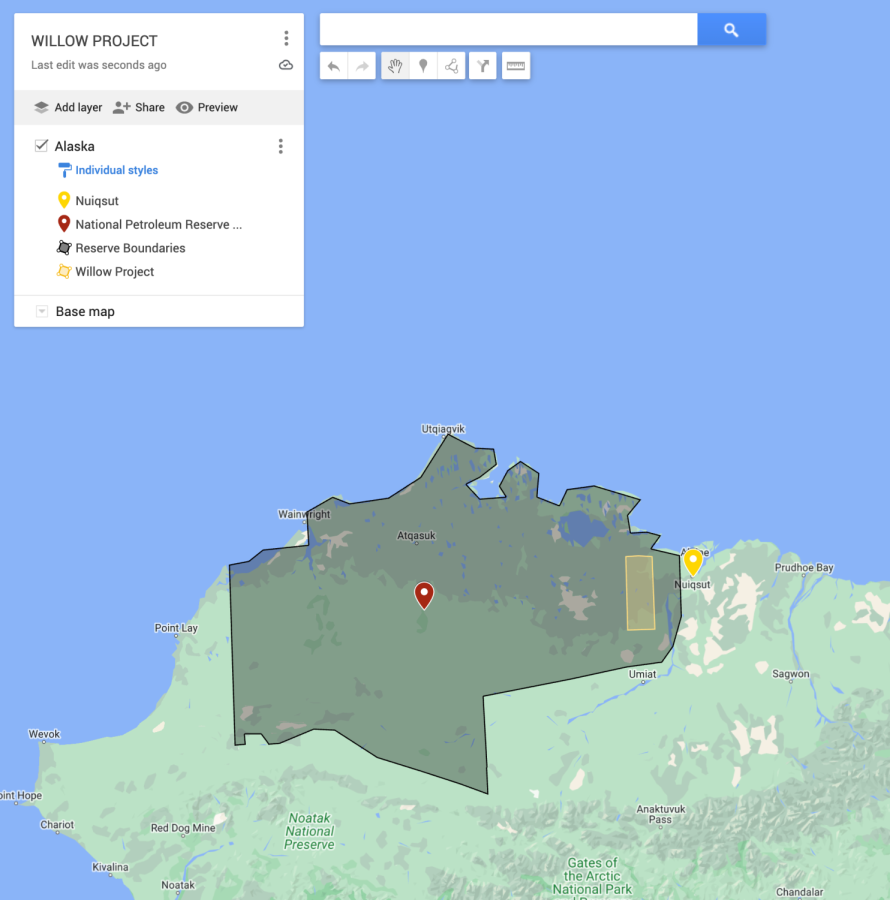Map made courtesy of Google Maps
What is the Willow Project?
On March 13, the Willow Project was approved by the Biden Administration, which now allows drilling in the untouched environments of Alaska.
This project plans to build an oil pipeline and begin drilling in the Northern Slope of Alaska, called the National Petroleum Reserve, a land put aside in 1923 for emergency oil supply for the U.S. Navy. In 1976, it was then transferred to the Bureau of Land Management (BLM) to protect the land.
The Willow Project had been working to get approved to move forward since September 2022.
The project received immense amounts of backlash online, with some creating petitions to put an end to the project, some of which reached millions of signatures.
This project is not the first to drill for oil in Alaska, with a majority of the projects in Alaska being led by ConocoPhillips, a drilling company, which has been in the oil drilling business since 1885.
The Willow Project is estimated to supply the United States with 300 permanent jobs and 2,000 new construction jobs and deliver close to $10 billion in federal and state revenue, which is one of the main reasons the project has received support.
ConocoPhillips is planning on extracting 576 million barrels of crude oil over 30 years. The project would also decrease America’s reliance on foreign energy sources, giving them an easier way to access oil.
But for many, these positives do not outway the negatives.
The drilling process could create up to 9.2 million metric tons of carbon waste pollution per year. Which would total 278 million metric tons of carbon dioxide over the 30 years spent extracting the oil.
President Joe Biden also promised to put an end to oil drilling on public lands back in 2020. With many already criticizing him, this only fueled the anger of those who opposed the project.
Oil leaks are also a major concern for those staying in Alaska. Previously, ConocoPhillips had an oil spill at Alpine Field, Alaska, causing many to flee their homes on May 21, 2008.
There is a possibility this could happen to other towns close to the Willow Project, such as Nuiqsut, home to five hundred.
This causes concern to those living nearby the new Willow Project.
Unknowing of what is headed their way, many animals like polar bears and many arctic birds live peacefully in the untouched areas of Alaska. No one can tell them that their environment is about to change for the benefit of humans.
With more pollution entering the environment, more ice glaciers will continue to melt.
Regardless of the situation, government officials just want to better the economy and the United States, while environmentalists want to protect their homes. They will continue to clash ideas now and in the future.

Kraig Norheim • May 3, 2023 at 4:13 pm
Penguins are not found in Alaska, do your research!